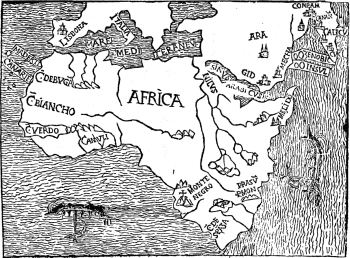
Because their ancestors often were slaves during the 18th and 19th centuries, and therefore usually lacked birth or death certificates, it is very difficult for African American genealogists to trace their ancestors further than a few generations.
Even when they can trace their ancestry to the slavery era, it is virtually impossible to find exactly where their ancestors originated because slave ships did not keep passenger lists of the people they captured from Africa.
As a consequence, many have been turning to genetics as a tool to help trace their African ancestry. But how reliably can genetics trace a person’s ancestry back to a specific African location or ethnic group?
Using genetics this way is quite complex; even the most advanced analysis can’t provide all the answers.
Relying on genetic data for genealogical purposes can be problematic, especially if your expectations are too great.
For example, Henry Louis Gates, Jr., the Director of the W.E.B. Du Bois Institute for African and African American Research at Harvard, had his Y-chromosome genotyped by two different companies. The first told him that his ancestors likely traced back to Nubia or Egypt, while the second test more accurately placed his paternal ancestry in Europe.
As an African American, Gates believes that the first company may have simply ‘told him what he wanted to hear’: that all of his ancestry traced back to Africa. But, as is often the case, one’s genetic ancestry can be more complex than meets the eye.
One problem is that genetic analyses predominantly trace deep ancestry. Because genetic information does not change significantly within one or two generations, genetics generally shows where a person’s ancestors lived thousands of years ago. This is hardly useful to genealogists who are looking for information about ancestors who lived only a few hundred years ago.
That isn’t to say we can’t learn anything useful about the deep ancestry of many African Americans — in fact, studies of genetic ancestry have yielded much information about prehistoric population movements across the continent. For example, there are clear genetic ‘footprints’ in modern Africans – and African Americans – indicating massive expansions of Bantu-speaking peoples from West Africa into the eastern and southern part of the continent over 4,000 years ago. This has helped archaeologists understand the extent to which not only the Bantu culture and language, but the people themselves, spread throughout the continent.
Most African Americans have the signature of this Bantu migration in their genes because they are descended from populations that were affected by it. But many, including Gates, have the genetic signature of another widespread group: Europeans. Indeed, European ancestry is not uncommon among African Americans, whose ancestors can include white slave owners who fathered children with their slaves.
The use of genetic data can be useful in confirming anecdotal evidence of a non-African ancestor in an African American’s family tree.
Many African American genealogists want greater detail and resolution from their genetic information, even a link to a specific nation or tribe. But in many cases this is simply not possible. The population history of Africa — especially sub-Saharan Africa — is older and more genetically complex than that of any other region of the world. Homo sapiens evolved in East Africa more than 150,000 years ago, and has been living throughout Africa continuously since that time.
There have been countless migrations, dispersals, and expansions of African peoples to all parts of the continent — in addition to the Bantu expansions. As a result, the genetic diversity of present-day Africans is incredibly complex.
In many cases, scientists are unable to associate a specific genetic classification with a specific tribe or ethnic group. There are of course a few exceptions — isolated hunter-gather groups like the !Kung of the Kalahari Desert and the Pygmies of the Central African Rainforest have lower levels of genetic diversity as a result of their relative isolation. But in West Africa, where the majority of slaves were captured, there is significant genetic diversity both within countries and within tribal or ethnic affiliations.
The high level of diversity means that scientists have a difficult time pinpointing where a particular person’s genetic roots trace beyond a more general geographical region (i.e. West Africa). For example, the paternal haplogroup E3a, found in more than half of African American men, is just as common in Africa itself – and spread throughout the continent. So, for an African American male who’s paternal ancestry falls within the E3a haplogroup, it could be virtually impossible to narrow down the place of origin of his African ancestors.
Still, when traditional tools are unavailable or incomplete genetics can reveal useful genealogical information, whether a person’s roots trace back to Africa, Europe, or someplace else entirely.



